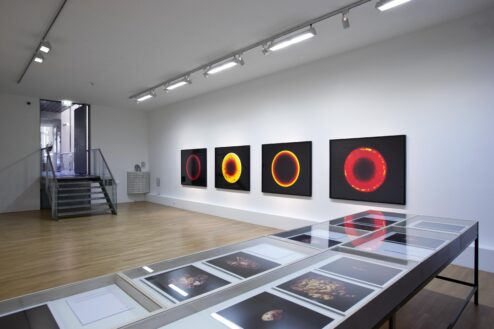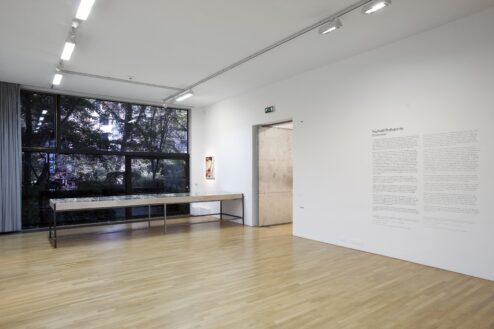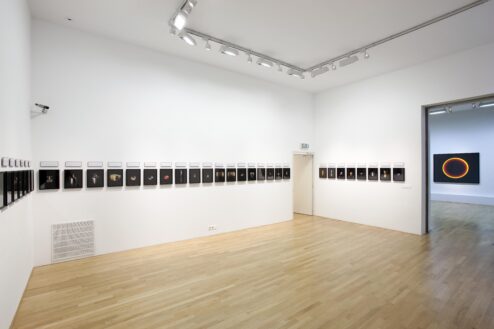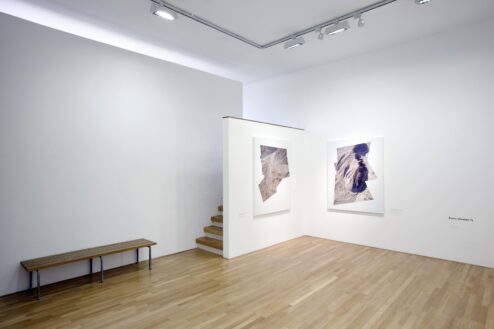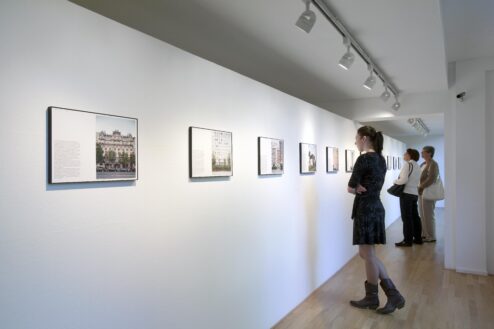Commissioned by Foam
Artist
Raphael Dallaporta
Curator
GwinZegal, Centre d’art de recherché / Kim Knoppers
Date: 2 september – 26 october 2011
French photographer Raphaël Dallaporta (b. 1980) received the Foam Paul Huf Award earlier this year from an international jury. The prize is organised by Foam and is awarded annually to up and coming international photographers until the age of 35. In Observation, four series are on show that Dallaporta produced between 2004 and 2011. The photos possess an inner tension that stems from the beauty of the object and the serious tone of the subject. The themes are emotionally highly charged, but Dallaporta chooses to work in a cool, recording, rather unassuming manner. He works intensively with specialists in fields relating to his series.
Fragile (2010) features frontal and objective shots of organs taken from corpses. Dallaporta worked with a team of forensic surgeons for this series. While the surgeons were looking for the causes of death, Dallaporta recorded the body parts they examined. The power of this work stems from the combination of apparently neutral images and extracts from the autopsy reports. Whilst working on Fragile he also photographed samples of fluids, which the forensic surgeons study for their final reports. This resulted in the works called Four Humours. These are almost abstract images which, dependent on the density of the analysed blood or bile, vary in colour. These pictures can be placed in the tradition of the four humours. This antique theory assumes that human health is dependent on the balance of the bodily fluids: blood, yellow bile, black bile and phlegm. The predominance of one of these can cause a certain type of character: sanguine (optimistic), choleric (stoic), melancholic (pessimistic) or phlegmatic (quick tempered). Associated with the four seasons, the four temperaments have played an important role in both psychiatry and psychology. It is also an important theme in literature and art history.
The landmines and ammunition in the Antipersonnel series (2004) have an exquisite beauty: small, with pleasant colours and an attractive form. Elegantly photographed, simply framed and persuasively presented, their aesthetic quality is what first attracts attention. Until we realize the full purpose of their existence: pure cruelty.
In Domestic Slavery (2006), Dallaporta and Ondine Millot (text) tackle a part of reality of human trafficking: mainly young women become unregistered migrants, who are then exploited in domestic situations. Dallaporta returned to the houses where these people were kept. His clinical, unsentimental pictures of the buildings testify to the banality of day-to-day inhumanity.
Whilst working on the series Ruins (2011), Dallaporta also worked with experts. He travelled with a team of French archaeologists to the north of Afghanistan. Using a drone – a small remote-controlled helicopter, especially adapted for this project- he took numerous photos of the Afghan landscape. In combination, these images form a single large aerial picture that show areas containing a rich cultural, social and political history. From the air, traces are visible of ancient civilizations as well as the remainders of perennial turmoil in the area.
Raphaël Dallaporta won the Young Photographer ICP Infinity Award in 2010. His work has been exhibited in the Musée de l’Elysée in Lausanne, at the New York Photo Festival and at Les Rencontres d’Arles. Antipersonnel, Domestic Slavery and Fragile have been published as books.
The Foam Paul Huf Award was set up to commemorate Foam’s special connection with Dutch photographer Paul Huf (1924-2002). Paul Huf was known for his innovative photographic style and was personally involved in the foundation of Foam, Amsterdam’s Photography Museum, in 2001.
The exhibition was organized in collaboration with GwinZegal, Centre d’art de recherché.
Thanks to Institut Français Pays-Bas.
Foam is supported by BankGiro Loterij, VandenEnde Foundation and De Brauw Blackstone Westbroek.

